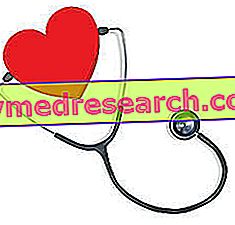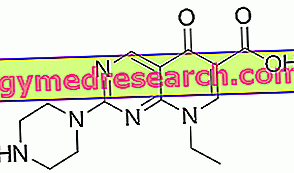Generality
Foot reflexology is a practice of so-called alternative medicine, which involves pressure and massage of the soles of the feet and the palms of the hands, with the ultimate aim of alleviating certain disorders or pathologies located in other parts of the body.

For the moment, on the effective therapeutic efficacy of plantar reflexology, several doubts remain: in fact, no scientific study has demonstrated the validity of the above-mentioned basic concept.
There are numerous theories of how the foot reflexology works, as well as the uses.
Among the conditions that reflexologists believe they can alleviate with one of their treatments are asthma, respiratory infections, indigestion, migraine, back pain, chronic pain and so on.
What is foot reflexology?
Foot reflexology is a technique (or practice) of alternative medicine, which involves the pressure and massage of specific areas of the feet and hands, with the final intention of bringing benefits to other anatomical elements of the human body, suffering from a some reason.
According to the idea behind foot reflexology, this therapeutic effect described above would be possible because, in certain areas of feet and hands, precise organs, nervous structures, joints, bony structures and glands of the human body correspond.
In other words, reflexologists (that is, lovers of foot reflexology) start from the assumption that, in the feet (above all) and in the hands of the human being, reside areas connected to a very specific organ, a certain gland etc.
The act of pressure or massage is up to an expert therapist in the practice of reflexology; therapist who usually makes use of the fingers of his own hands, without the use of particular oils or lotions.
To be precise, the critical areas reside in the soles of the feet and in the palms of the hands .
DO YOU HAVE A SCIENTIFIC FOUNDATION?
No medical-scientific study conducted so far has demonstrated the validity of the idea underlying foot reflexology, namely: specific organs, nervous structures, etc. correspond to specific areas of the foot or hand.
All this means, of course, that the therapeutic purposes of pressure and hand and foot massage are in doubt.
- Among the investigations aimed at demonstrating the efficacy of plantar reflexology, those that some researchers carried out between 2009 and 2011 had a particular importance. At the end of this research, scholars declared that: "even the best evidence available to date, regarding the effectiveness of foot reflexology, does not convincingly prove that the aforementioned practice represents valid medical treatment against a given pathological condition ".
PLANTAR REFLEXOLOGY AND REFLEXOLOGY ARE THE SAME WHAT?
Often, the experts in plantar reflexology and the guides who describe the main features use, for convenience, the only word " reflexology ". Thus, the terms plantar reflexology and reflexology refer to the same concept.
The use of the adjective plantar, in the complete wording, is explained by the fact that therapists practice massage and pressure mainly on the soles of the feet . Massage and palm pressure are less common.
SOME HISTORICAL INFORMATION
Foot reflexology has ancient roots. According to some historical research, a similar practice was already widespread in the 4000 BC Church and in Ancient Egypt; moreover, it seems that a sort of foot massage, with therapeutic purposes on the rest of the body, was also in vogue among the Indian tribes of North America.
Coming to more recent times, to propose for the first time the modern concept of plantar reflexology was an American doctor named William H. Fitzgerald, in 1913. Specialist in otorhinolaryngology, Fitzgerald stated that applying pressure on the feet has an effect anesthetic in certain parts of the body. This anesthetic effect, again according to Fitzgerald's theories, could have replaced the use of anesthetic drugs in all those minor surgical procedures.
Fitzgerald's ideas were soon successful, particularly among dentists, so much so that another American doctor, named Edwin Bowers, picked them up and made them treaties with all the information necessary for the knowledge of the medical practice in question.
For those times, foot reflexology was known as " zonal therapy ", a term coined by Fitzgerald.
Between the 1930s and the 1940s, theories of zonal therapy underwent an evolution: the American Eunice D. Ingham, a physiotherapist by profession, redefined Fitzgerald's concepts. Ingham mapped the entire human body on the soles of his feet and on his palms; he also changed the name zonal therapy to reflexology, as he maintained that the anatomical structures of the body were reflected on the hands and feet.
In Italy, two pioneers of contemporary foot reflexology were the neurologist Giuseppe Calligaris, Professor at the University of Rome, and Dr. Nicola Gentile . Their studies are dated around the 1930s.
How does it work
Reflexologists have proposed various theories to explain the mechanisms that govern the alleged therapeutic efficacy of foot reflexology.
Among these theories, they deserve a special mention:
- The theory of lymphatic drainage . The lymphatic system has the purpose of eliminating from our body, through the so-called lymph, any excesses of fluids and toxins (lymphatic drainage).
Supporters of this theory believe that plantar reflexology stimulates the lymphatic system to function more effectively and with greater speed. In this way, the elimination of toxins and excess fluids takes place with better results and benefit the whole body.
- The theory of hormonal release . Based on the (widely demonstrated) concept that the brain controls part of the endocrine system (ie the set of glands and hormone-secreting cells), this theory holds that the message of a particular area of the feet or hands stimulates the brain to release hormones to therapeutic action, at the level of the reflected anatomical element.
A hormone with a prominent role in these processes is endorphine; Endorphine has analgesic properties.
- The theory of nerve stimulation . This theory starts from the assumption (not yet proved) that there is a nervous connection between the various zones of the feet and hands, the different anatomical elements of the body and the brain.
Supporters of the theory of nerve stimulation believe that the pressure of a certain area of the feet or hands improves the nervous communication between the brain and the reflected anatomical element.
Improving nervous communication should lead to an improvement of existing problems.
- The theory of improving blood circulation . He states that the techniques of massage and pressure of the foot reflexology determine an improvement of the blood circulation, at the level of the reflex organs.
The blood carries oxygen and nutrients - which are essential for the survival of the organism - and eliminates the waste products of the cells. Thus, an improvement in blood circulation means a greater supply of vital elements and a more effective waste elimination process.
- The theory of electrical response . The supporters of this theory compare the anatomical elements of the human body to accumulators and compare the reflex zones of the feet and hands with the switches of the aforementioned accumulators. The pressure of the switches serves to reactivate / improve the electric circulation that governs the functioning of the accumulators.
- The theory of psychological response . Based on the belief that the mind influences the resolution of physical pain and healing processes in general, this theory states that reflexology helps the mind to overcome physical ailments.
- The energy theory Chi (or Qi) . Those who support this theory believe that plantar reflexology improves the flow of Chi (or Qi), an energy that flows within the human body and regulates the health of the organism.
ORGANIZATION OF THE REFLECTED AREAS
According to reflexologists, the reflex zones corresponding to the right anatomical elements of the body would reside on the foot and right hand of an individual; while, on the left foot and hand, the reflex zones corresponding to the left anatomical structures of the body would take place.
All this is quite intuitive, however it is always useful to give some examples to better explain the concept:
- The right lung has its reflex area on the foot or the right hand, while the left lung on the foot or the left hand.
- The heart locates on the foot and on the left hand.
- The spleen takes place on the foot and on the left hand.
- The stomach is reflected on the foot and on the left hand.
- The left knee locates on the left foot.
- Etc

uses
Who performs reflexology is the idea that, with the massage and the pressure of hands and feet, the symptomatological picture of numerous acute and chronic pathological conditions improves significantly.
Among the pathological conditions that reflexologists believe they can alleviate, they deserve a special mention:
- Asthma . The therapist goes to massage and press the areas of the feet and hands that reflect the lungs, heart and rib cage, with the intent to improve respiratory airway health.
- Respiratory problems due to usually pulmonary infections . The massage and pressure concern the areas that reflect the lungs and the chest in general.
- Constipation . In the presence of constipation, reflexologists massage and press the reflex areas corresponding to the intestine.
- Irritable bowel syndrome . As in the previous case, the massage and pressure affect the reflex zones that correspond to the intestine.
- Earache . Obviously, the therapist presses the areas of feet (or hands) that reflect the ears.
- Eczema .
- Sports injuries in general . In such situations, the therapist massages and presses the reflex zones that correspond to the structure or painful anatomical structures. For example, in the presence of a knee disorder, the massage and pressure of the area will concern the area reflecting the corresponding knee.
- Stress-induced disorders . These could consist of: recurring headaches, persistent stomach problems etc. Massages and pressures concern various reflex zones, including those corresponding to: neck, brain, digestive tract and spine.
- Irritability and bad mood . In these cases, the therapist exercises massage and pressure in the reflex areas that correspond to important organs such as the kidneys, bladder and intestines. The idea is that a better functioning of these anatomical elements leads to an improvement in mood.
- Tonsillitis . The reflex areas of interest are those that correspond to the neck and head.
- The symptoms of menopause .
- Bladder problems .
- Bad digestion .
- Back pain .
- Anxiety .
- Chronic pain .
MULTIPLE SCLEROSIS AND CANCER
According to some experts in the field, plantar reflexology would also be useful for patients with multiple sclerosis and cancer patients, for at least three reasons:
- It reduces stress and anxiety, due to the serious pathological condition in place.
- Relieves any pain.
- It improves the mood and the mental approach with which the patient faces the disease.
That said, it is important to emphasize that foot reflexology cannot and should not replace traditional medical treatments, aimed at treating multiple sclerosis or cancer.
In fact, while the aforementioned treatments of traditional medicine have demonstrated their efficacy on several occasions, reflexology remains, for the moment, a practice with no proven therapeutic power.
Example of a typical session
Before starting a plantar reflexology session, the therapist invites the "patient" to remove any garment or object from his feet and hands and to sit in a suitable reclining bed, present in the study.
Then, he proceeds with a brief washing of feet and hands and with their careful observation.
The observation is useful for identifying any skin pathologies and for understanding the skin sensitivity of these anatomical areas.
The last step, before the start of the massage and the pressures, consists of a series of warm-up exercises for the feet and hands, which the "patient" performs on the indication and with the help of the therapist.
The average duration of a classic plantar reflexology session is, on average, about 45 minutes .
Side effects
Foot reflexology is a widely accepted practice.
Only in rare cases, in fact, can it lead to some undesirable effects including:
- Slight stunning. It is a consequence of the state of relaxation in which the "patient" falls during the session.
- Pain in the feet and / or hands. It is an effect of massage and pressure.
- State of pre-sitting agitation. Typically, it is typical of "patients" who rely for the first time on the care of an expert in foot reflexology.
Contraindications
Diabetes, circulation problems in the feet, vasculitis in the legs, deep vein thrombosis in the legs, gout, foot ulcers, foot fungi ("athlete's foot"), thyroid problems, epilepsy and thrombocytopenia are all health conditions in the presence of which is often contraindicated plantar reflexology (or in any case the opinion of a trusted doctor is advised).



